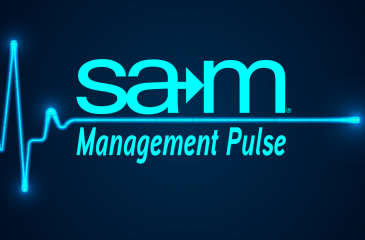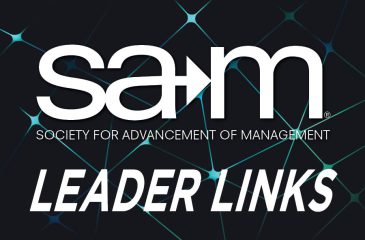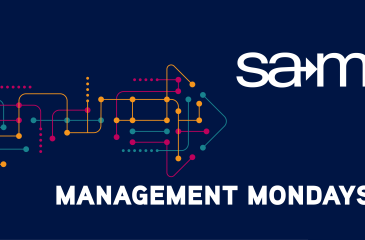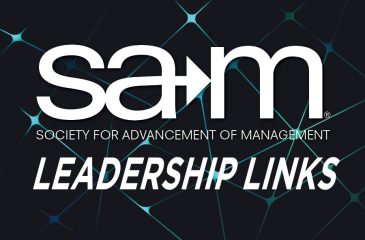Trends
-
Should Apple Replace Tim Cook as CEO? Analysts Call for a Product-Focused Leader
Apple’s board faces pressure to find a CEO with a stronger product focus as analysts warn that Tim Cook’s operational strengths may not drive the rapid AI and innovation needed for Apple’s next growth phase.
-
Leadership Links #5
Discover five essential corporate governance updates including rising board-CEO conflicts, Tesla shareholder actions, and leadership shifts at X and BP. Gain strategic insights to strengthen board oversight and drive long-term value. Stay ahead of investor-driven boardroom trends and governance best practices.
-
Forget Perfection: Why Managers Should Prioritize Consistency Over Clean Wins
When asked about the key to his performance during a record-breaking basketball season, one athlete gave an answer that holds surprising power for leaders: “My whole life is consistent.” He didn’t focus on raw talent or ambition. Instead, he emphasized rhythm and discipline. That same sense of rhythm can become a defining quality in leadership. In many professional settings, managers are expected to perform flawlessly, juggling tasks and decisions with the appearance of control. The reality, however, is that perfection is rare, fleeting, and often unsustainable. It demands too much, too often, and leaves little room for learning or resilience
-
Mid-Year touchbase on Leadership Articles from MIT Sloan Management Review in 2025
Discover the five most popular leadership articles from MIT Sloan Management Review in 2025. Learn key insights on AI change management, strategic resilience, culture leadership, and more to guide your organization through uncertainty.
-
Leadership Links #4
Explore Boeing’s new Defense leader, Kering’s fresh CEO pick, Intel’s strategic realignments, Barclays’ co-COO model, and Hibernian FC’s commercial CEO hire.
-
Health Isn’t a Luxury: How Managers Can Build Microwins Into Everyday Wellness
For many managers, health becomes the first thing to sacrifice when pressure builds. Skipped meals, reduced sleep, back-to-back meetings, and endless screen time become the norm. There is an unspoken assumption that success requires personal depletion. But in reality, sustainable leadership depends on personal well-being. When your health suffers, your decision-making, patience, and resilience suffer too. You may still get things done, but you are not leading at your best.
-
UnitedHealth Names Patrick Conway CEO of Optum Health: Steering the Division Through Change
UnitedHealth Group appoints Patrick Conway as CEO of Optum Health to restore growth, advance value-based care models, strengthen compliance, and drive digital innovation amid regulatory challenges.
-
Leadership Links – #3
Leadership Links #3 brings you five essential insights on boardroom culture clashes, authentic DEI strategies, phased leadership transitions, sustainability as resilience, and broader talent oversight.
-
Rewriting the Story of Work: Finding Meaning Whether You’re Lit Up or Burned Out
When most people think of work, they picture the thing that pays the bills. It is often reduced to a job description, a department, or a performance review. For some, work brings energy and purpose. For others, it becomes a source of pressure, routine, or quiet dissatisfaction. No matter where you land, your relationship with work has a powerful influence on your overall well-being. It shapes your identity, controls your schedule, and defines your sense of accomplishment. Yet at some point, many professionals stop asking themselves a simple question: does this still feel meaningful?
-
Regis Corporation Announces CEO Transition: Ensuring Continuity and Strategic Renewal
Regis Corporation names veteran executive Jim Lain as interim CEO following Matthew Doctor’s departure, ensuring seamless leadership and ongoing digital innovation.
-
Leadership Links – #2
Discover five essential insights on shareholder activism in Japan, AI-focused restructuring at Accenture, record S&P 500 CEO turnover, leaner management layers, and Alphabet’s AGM outcomes to guide your leadership strategy.
-
The Invisible Balancing Act: Managing Work, Family, and Health Without Losing Yourself
The idea of work-life balance shows up everywhere. It appears in leadership seminars, corporate values, and wellness programs. Yet for many professionals, it feels like a phrase that belongs more in theory than in reality. Life does not move in clean, evenly divided segments. Work often flows into the evenings, family needs interrupt structured plans, and personal health is quietly set aside until it demands attention. Trying to balance everything equally can leave you feeling like you are always behind. No matter how carefully you manage your schedule, the scales never seem to settle evenly.
-
CEO Succession in 2025: Urgency and Opportunity
In early 2025, chief executive turnover among S&P 500 companies reached 14.8 percent, with 646 departures in the first quarter, marking the highest quarterly total on record since 2001. This surge reflects several factors happening at once, including aggressive cost-cutting initiatives that eliminated layers of middle management, changing career expectations among younger professionals and a persistent underinvestment in deliberate leadership development.
-
Leadership Links – #1
In a business landscape increasingly shaped by artificial intelligence, workforce evolution, and global uncertainty, today’s leaders must stay informed and adaptable. This edition of Leadership Links brings together essential articles and resources that explore the future of work, the rise of agentic AI, and the tools needed to shape high-performance teams. Whether you’re refining your HR strategy or navigating workforce transformation, each link below offers timely insights that can help you lead with clarity and foresight. Use these resources to challenge your assumptions, realign your priorities, and make smarter, people-centered decisions.
-
From Burnout to Breakthrough: Building BAWDY Goals That Actually Motivate You
Many managers are excellent at setting goals. They are taught to tie objectives to key performance indicators, align targets with strategic plans, and monitor progress through data. On the surface, this seems like a recipe for success. But the truth is, many professionals continue to feel directionless or disengaged even when those goals are met. The reason isn’t a lack of effort or commitment. It’s that most traditional goals are built for systems, not for people. They keep the machine running, but they rarely speak to personal growth or purpose.
-
Shut Down the Inner Critic: Rewriting the Mental Playlist of Self-Defeating Managers
Some of the harshest criticism leaders ever hear comes from within. The internal voice that says you’re not ready, not smart enough, or not the right person for the job […]
-
Declare War on the Status Quo: How Leaders Can Break Free from Complacency
At some point in every career, a quiet question begins to form: Is this all there is? The job is steady, the team is functional, and the goals are being […]
-
Time Is Made, Not Found: A New Philosophy for Managers Drowning in Busyness
It’s one of the most common phrases in the modern workplace. Managers say it. Teams say it. We all feel it. Being busy has become a symbol of productivity and purpose, even though it often means the opposite. Calendars are packed, inboxes are overflowing, and the most important work gets pushed to the edge of the day or forgotten entirely.
-
Lead Like You’ll Be Remembered: Embracing Mortality as a Management Mindset
One of the most powerful ways to transform how you lead is to begin thinking about how you’ll be remembered. Not in terms of reputation management or brand-building, but in the quiet, personal sense. Ask yourself a simple but profound question: if someone were to speak at your funeral, what would you want them to say about how you lived, how you worked, and how you made others feel?
-
From Invisible to Invaluable: Managing Your Brand at Work
Many professionals assume that strong performance will naturally lead to recognition. They believe that if they work hard, follow the rules, and avoid mistakes, their efforts will be noticed. While this may happen in some environments, it is not a reliable strategy. In reality, waiting to be discovered often leads to frustration. Your contributions may be essential, but without visibility, others may not know the extent of your impact.
-
The Myth of Hard Work Alone
Many professionals are taught that hard work is the key to success. From early schooling to entry-level roles, the message is clear: if you want to get ahead, put in the hours. While this advice is not entirely wrong, it is incomplete. Hard work is important, but it is not the only ingredient in a successful career. People who rise to leadership roles and gain influence often do more than just work hard.
-
Build the Belief That Fuels Growth
Success begins in the mind. The stories we tell ourselves about what we are capable of tend to shape our outcomes more than the actual challenges we face. Many professionals carry a silent doubt that eventually limits their growth. Even those with proven track records may question whether they are truly ready for a larger role or a new challenge. These thoughts often go unspoken, but they show up in small ways. They appear when we hesitate to speak up, avoid taking on new responsibilities, or second-guess our own ideas.
-
The Three Proficiencies That Define Career Momentum
Most professionals enter the workforce believing that mastering their job responsibilities is the most important factor in advancing their careers. Technical proficiency forms the base of your credibility and ensures that you meet the expectations of your role. Whether you work in marketing, finance, operations, or any other field, being dependable and detail-oriented is essential. People who consistently deliver quality work build trust and are more likely to be invited into conversations about higher-stakes projects.
-
The Call to Action People Won’t Ignore: How to Move Teams from Talk to Transformation
Every meeting, presentation, or one-on-one conversation has an unspoken test at the end. Did the message lead to action, or did it simply fill time? Many professionals deliver compelling updates, share thoughtful insights, and lead productive discussions, but still fail to create movement. The missing piece is often a clear and actionable close. A strong call to action is not about wrapping things up with polite phrases or open-ended invitations. It is about giving people direction, purpose, and clarity on what comes next. Without that clarity, even the best message loses momentum the moment the meeting ends.
-
Make It Stick: Storytelling Techniques That Turn Information Into Impact
Every day, professionals share data, strategies, and updates that are important but quickly forgotten. The problem is not the content. The problem is that most messages lack emotional connection. Without emotion, the human brain treats information as disposable. Storytelling changes that. A well-told story gives people something to relate to, something they can picture and feel. It wraps facts in meaning and turns ideas into experiences. When you use storytelling to communicate, you give your audience a reason to care and a way to remember.




